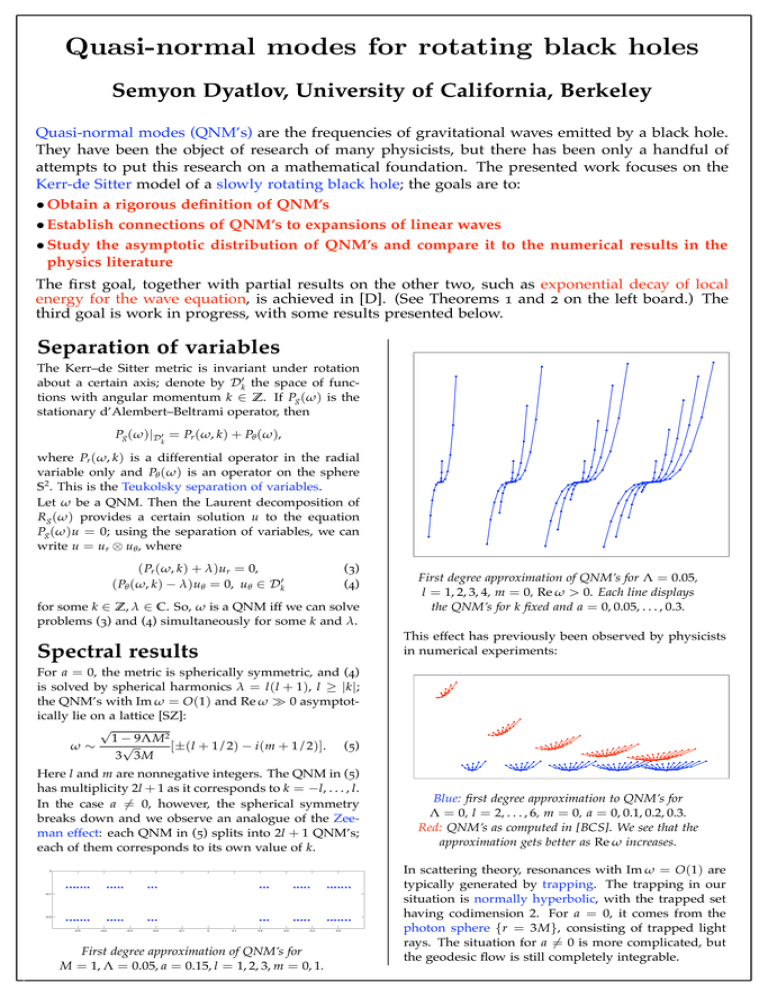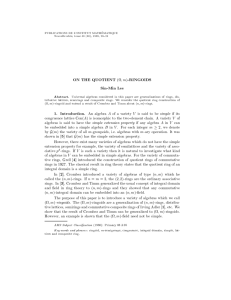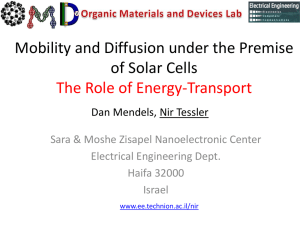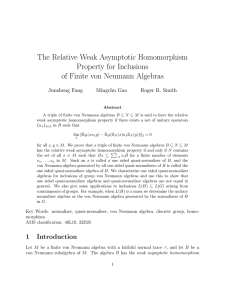Quasi-normal modes for rotating black holes
advertisement

Quasi-normal modes for rotating black holes
Semyon Dyatlov, University of California, Berkeley
Quasi-normal modes (QNM’s) are the frequencies of gravitational waves emitted by a black hole.
They have been the object of research of many physicists, but there has been only a handful of
attempts to put this research on a mathematical foundation. The presented work focuses on the
Kerr-de Sitter model of a slowly rotating black hole; the goals are to:
• Obtain a rigorous definition of QNM’s
• Establish connections of QNM’s to expansions of linear waves
• Study the asymptotic distribution of QNM’s and compare it to the numerical results in the
physics literature
The first goal, together with partial results on the other two, such as exponential decay of local
energy for the wave equation, is achieved in [D]. (See Theorems 1 and 2 on the left board.) The
third goal is work in progress, with some results presented below.
Separation of variables
The Kerr–de Sitter metric is invariant under rotation
about a certain axis; denote by Dk! the space of functions with angular momentum k ∈ Z. If Pg (ω ) is the
stationary d’Alembert–Beltrami operator, then
Pg (ω )|D ! = Pr (ω, k ) + Pθ (ω ),
k
where Pr (ω, k ) is a differential operator in the radial
variable only and Pθ (ω ) is an operator on the sphere
S2. This is the Teukolsky separation of variables.
Let ω be a QNM. Then the Laurent decomposition of
R g (ω ) provides a certain solution u to the equation
Pg (ω )u = 0; using the separation of variables, we can
write u = ur ⊗ uθ , where
( Pr (ω, k ) + λ)ur = 0,
( Pθ (ω, k ) − λ)uθ = 0, uθ ∈ Dk!
(3)
(4)
for some k ∈ Z, λ ∈ C. So, ω is a QNM iff we can solve
problems (3) and (4) simultaneously for some k and λ.
First degree approximation of QNM’s for Λ = 0.05,
l = 1, 2, 3, 4, m = 0, Re ω > 0. Each line displays
the QNM’s for k fixed and a = 0, 0.05, . . . , 0.3.
This effect has previously been observed by physicists
in numerical experiments:
Spectral results
For a = 0, the metric is spherically symmetric, and (4)
is solved by spherical harmonics λ = l (l + 1), l ≥ |k |;
the QNM’s with Im ω = O(1) and Re ω & 0 asymptotically lie on a lattice [SZ]:
√
1 − 9ΛM2
√
[±(l + 1/2) − i (m + 1/2)]. (5)
ω∼
3 3M
Here l and m are nonnegative integers. The QNM in (5)
has multiplicity 2l + 1 as it corresponds to k = −l, . . . , l.
In the case a )= 0, however, the spherical symmetry
breaks down and we observe an analogue of the Zeeman effect: each QNM in (5) splits into 2l + 1 QNM’s;
each of them corresponds to its own value of k.
0
−0.1
−0.2
−0.5
−0.4
−0.3
−0.2
−0.1
0
0.1
0.2
0.3
0.4
First degree approximation of QNM’s for
M = 1, Λ = 0.05, a = 0.15, l = 1, 2, 3, m = 0, 1.
0.5
Blue: first degree approximation to QNM’s for
Λ = 0, l = 2, . . . , 6, m = 0, a = 0, 0.1, 0.2, 0.3.
Red: QNM’s as computed in [BCS]. We see that the
approximation gets better as Re ω increases.
In scattering theory, resonances with Im ω = O(1) are
typically generated by trapping. The trapping in our
situation is normally hyperbolic, with the trapped set
having codimension 2. For a = 0, it comes from the
photon sphere {r = 3M}, consisting of trapped light
rays. The situation for a )= 0 is more complicated, but
the geodesic flow is still completely integrable.






